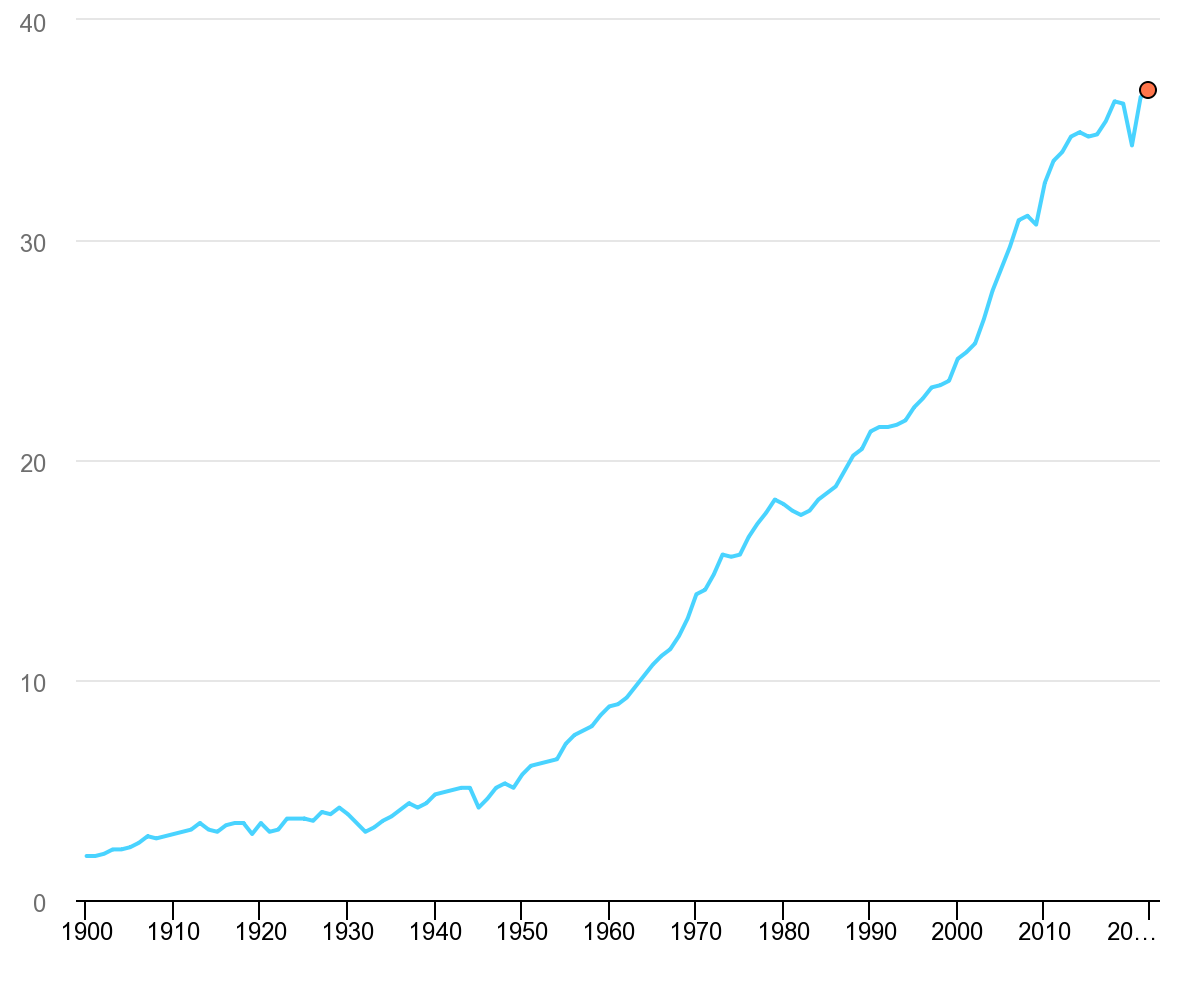Once again, these are alarming figures that climate researchers have brought to light. Because in order to achieve the 1.5-degree target that almost all countries in the world agreed on at the UN Climate Change Conference (“Paris Agreement”) in 2015, only around 250 billion tons of carbon dioxide may be emitted in order to to avoid an accumulation of CO2 in the atmosphere, which would lead to a temperature increase of 1.5 °C. But currently it is about 54 billion tons of CO2 per year that mankind causes. If it stays at this level, the CO2 budget will be used up in 4.6 years – i.e. at the beginning of 2028.
“At current annual rates of greenhouse gas emissions of around 54 billion tonnes per year over the past decade, reserves would be exhausted well before the end of this decade,” said Professor Piers Forster, Director of the Priestley Center for Climate Futures at the University of Leeds . He and his team have presented a new study that aims to update indicators on the state of the climate system and human influence on it annually.
“Indicators show that human-caused warming averaged 1.14 for the decade 2013-2022 [0,9 bis 1,4] °C and in 2022 1.26 [1,0 bis 1,6] °C. Over the period 2013-2022, human-caused warming has increased at an unprecedented rate of over 0.2 degrees per decade. This high rate of warming is caused by a combination of greenhouse gas emissions, which have reached an all-time high of 54 ± 5.3 gigatonnes of CO2 over the past decade, and a reduction in the strength of aerosol cooling,” the report said.
After all, there is also slightly positive information in the study. “Nonetheless, there are signs that greenhouse gas emissions growth has slowed, and depending on societal choices, a continued series of these annual updates in the critical 2020s could indicate a shift in direction in human influence on climate,” it said. “This is the critical decade for climate change. The decisions made now will affect how much temperatures will rise and how strong and severe the impact will be,” Forster continued.
The researchers have summarized the most important indicators in an infographic. They show how the numbers have changed since the IPCC sixth assessment report (AR6 of 2021):
As reported, mankind has not yet managed to reduce CO2 emissions. There was only a decline in 2020, at that time of course due to the worldwide lockdowns in the corona pandemic. After that, emissions of greenhouse gases rose again. However, the International Energy Agency (IEA) assumes different figures than the researchers at the University of Leeds. While they calculate with 54 ± 5.3 gigatonnes of CO2 emissions per year, the IEA speaks of 36.8 gigatonnes of CO2 in the year 2022. If you take this number and keep on calculating it, then the CO2 budget of mankind for the 1 5-degree target will still be enough until 2030 – not much longer than in the calculation above.

Coal and oil will increase CO2 emissions worldwide to a new record in 2022
